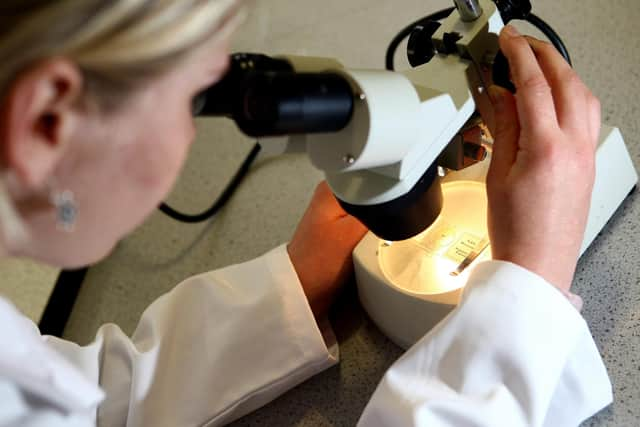How scientists in Sheffield could help tackle food insecurity by genetically modifying rice
As sea levels rise under climate change salt water is increasingly flooding further inland, destroying crops that can no longer cope with the higher salinity.
Now, findings from the University of Sheffield outline, adapting rice to have a better salt tolerance could allow it to be grown in places where it would otherwise fail.
Advertisement
Hide AdAdvertisement
Hide AdThe research from the university's Institute for Sustainable Food is published in the New Phytologist, paving the way for inroads in food security.


Dr Robert Caine, lead author of the study from the School of Biosciences, said: “Rice is a hugely important food crop eaten by over half the world's population on a daily basis.
"Ensuring that it can survive in harsher conditions caused by climate change will be integral to feeding a growing population that is projected to reach 10bn in 60 years’ time."
Rice is arguably the most important food crop on earth - it is relied on by 3.5bn people every single day, with 30 per cent of the world’s freshwater supply used to grow the crop.
Advertisement
Hide AdAdvertisement
Hide AdMore and more places around the world are struggling with seawater inundation, such as Vietnam which is finding it harder.
Rice, as one of the most important carbohydrates on earth, is one of the worst affected crops.
The new research finds that genetically modifying rice to reduce the number of stomata it has - tiny openings used for water loss - makes it more salt-resistant.
Stomata are openings that most plants have which regulate carbon dioxide uptake for photosynthesis, along with the release of water vapour.
Advertisement
Hide AdAdvertisement
Hide AdSeveral years ago, Sheffield scientists found that reducing the number and size of stomata that rice plants have allows them to use up to 60 per cent less water, making them hugely beneficial in places prone to drought.
Those findings, along with these new results, mean that rice can be adapted to survive in harsher environments.
Reducing the number and size of stomata could make rice harder to grow in extremely hot temperatures, the researchers also found, meaning modifications would be needed to adapt to differing countries and climates.
The Sheffield researchers, working alongside the High Agricultural Technology Research Institute (HATRI) in Vietnam, studied 72 rice varieties, both natural and genetically modified.
Advertisement
Hide AdAdvertisement
Hide AdThey are now planning to investigate whether they can make dwarf rice varieties, which produce the highest crop yields, more heat-resistant.
Dr Caine said: “Our findings reveal how rice can be modified to grow as effectively as possible in different climates - varieties of rice that have less stomata can survive with less water and in places with salt water.
"Meanwhile, natural rice varieties with fewer, bigger stomata are able to thrive in hotter temperatures.”